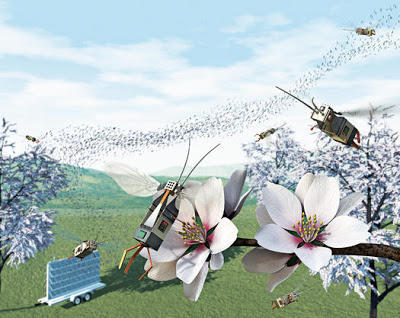
Flight of the Robobees
Type
RoboBees are flying robots the size of bees. Their size presents a huge assortment of physical and computa- tional challenges. At such small dimensions, off-the- shelf parts such as motors and bearings will prove too inefficient, so the bees must employ specially designed artificial muscles to power and control flight. In addition, the tiny bees must think on their own, using miniature sensors to process environmental cues and processors to make decisions on what to do next. Like real bees, RoboBees will work best when employed as swarms of thousands of individuals, coordinating their actions without relying on a single leader. The hive must be resilient enough so that the group can complete its objectives even if many bees fail.
Robert Wood is Charles River Professor of Engineering and Applied Sciences at Harvard University and the Wyss Institute for Biologically Inspired Engineering at Harvard. The National Science Foundation recognized his work with a 2012 Alan T. Waterman Award.
Radhika Nagpal is Fred Kavli Professor of Computer Science at Harvard and the Wyss Institute. Her work on collective behavior spans artificial intelligence, robotics and biology.
Gu-Yeon Wei is Gordon McKay Professor of Electrical Engineering and Computer Science at Harvard. His research interests span a broad range of topics in energy-efficient computing systems.

